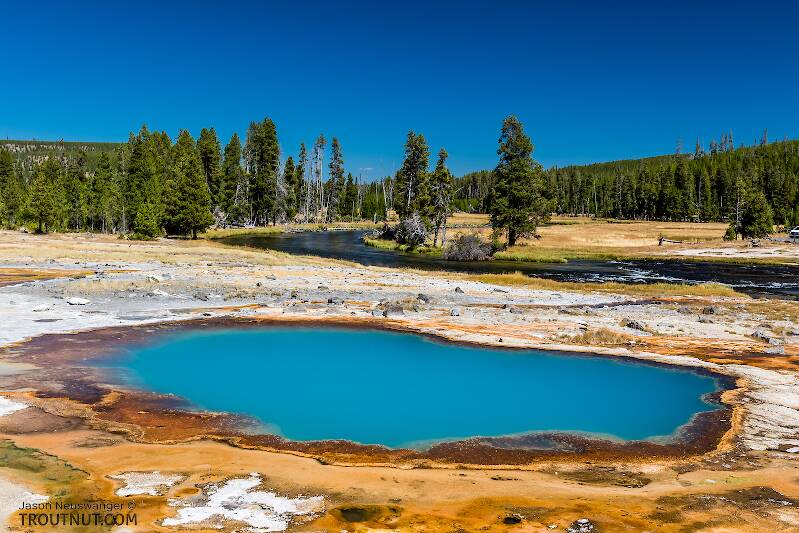
Blue-winged Olives
Baetis
Tiny Baetis mayflies are perhaps the most commonly encountered and imitated by anglers on all American trout streams due to their great abundance, widespread distribution, and trout-friendly emergence habits.


Stonefly Species Capnia umpqua (Little Snowflies)
Species Range
Physical description
Most physical descriptions on Troutnut are direct or slightly edited quotes from the original scientific sources describing or updating the species, although there may be errors in copying them to this website. Such descriptions aren't always definitive, because species often turn out to be more variable than the original describers observed. In some cases, only a single specimen was described! However, they are useful starting points.
Description from GBIFthe Global Biodiversity Information Facility
Source: Larvae Of Five Species Of The Winter Stonefly Genus Capnia (Plecoptera: Capniidae) From California, U. S. A.
(Figs. 10, 11, 20 - 25, 44 - 49, 56 - 59)
Source: Larvae Of Five Species Of The Winter Stonefly Genus Capnia (Plecoptera: Capniidae) From California, U. S. A.
Characters. Body length male 5.0 - 6.0 mm. Light to medium brown dorsally, ventrum lighter, little pattern except underlying muscles or developing adult pigment (Figs. 20, 23). Antennal segments 46 - 48, head capsule width male 0.75 mm, female 0.96 mm. Lacinia triangular, palmate with longitudinally striate palm surface, broad apical teeth, ventral comb of 10 - 14 bristles and dorsal comb of 16 - 18 longer bristles (Fig. 44). Right mandible with apical teeth, molar pad of dense, stiff bristles, and inner band of hairs from base of apical teeth to molar pad (Figs. 45, 46). Left mandible with molar cup bordered by outer (dorsal) comb of curved teeth (Figs. 47, 48). Pronotum with scattered setae over surface and as a marginal fringe (Fig. 20). Mesosternal Y-arms with enclosed subtriangular area about 0.3 times the intercostal width (Fig. 22). Hind wing pads shallowly notched along inner margin (Fig. 20); inside forewing pad length male 0.96 mm, female 1.08 mm. Femora with scattered surface bristles, and tibia with a silky outer fringe (Fig. 21). Abdominal segments with long surface hairs (Fig. 56). Sexual dimorphism evident. Males with short posterior extension of 10 th tergum, triangular in dorsal and ventral views (Figs. 11, 23) with underlying developing narrow, tubular epiproct visible in pharate individuals (Figs. 11, 23); 10 th tergum in lateral view subtriangular, nearly straight dorsally, with slightly downturned tip (Figs. 10, 49). Female without posterior extension of 10 th tergum (Fig. 20). Cercal segments 28 - 30; cercomeres with apical circlet of short and long bristles, longer dorsal and ventral bristle in lateral view, and no intercalary hairs (Figs. 24, 25, 58, 59).
Start a Discussion of Capnia umpqua
References
- Jacobus, L. M., Wiersema, N.A., and Webb, J.M. 2014. Identification of Far Northern and Western North American Mayfly Larvae (Insecta: Ephemeroptera), North of Mexico; Version 2. Joint Aquatic Science meeting, Portland, OR. Unpublished workshop manual. 1-176.
- Merritt R.W., Cummins, K.W., and Berg, M.B. 2019. An Introduction to the Aquatic Insects of North America (Fifth Edition). Kendall/Hunt Publishing Company.
Stonefly Species Capnia umpqua (Little Snowflies)
Species Range
Common Names
Resources
- NatureServe
- Integrated Taxonomic Information System
- Global Biodiversity Information Facility
- Described by Frison, T.H. (1942) Descriptions, Records and Systematic Notes Concerning Western North American Stoneflies (Plecoptera). The Pan-Pacific Entomologist 18, 61–73.

